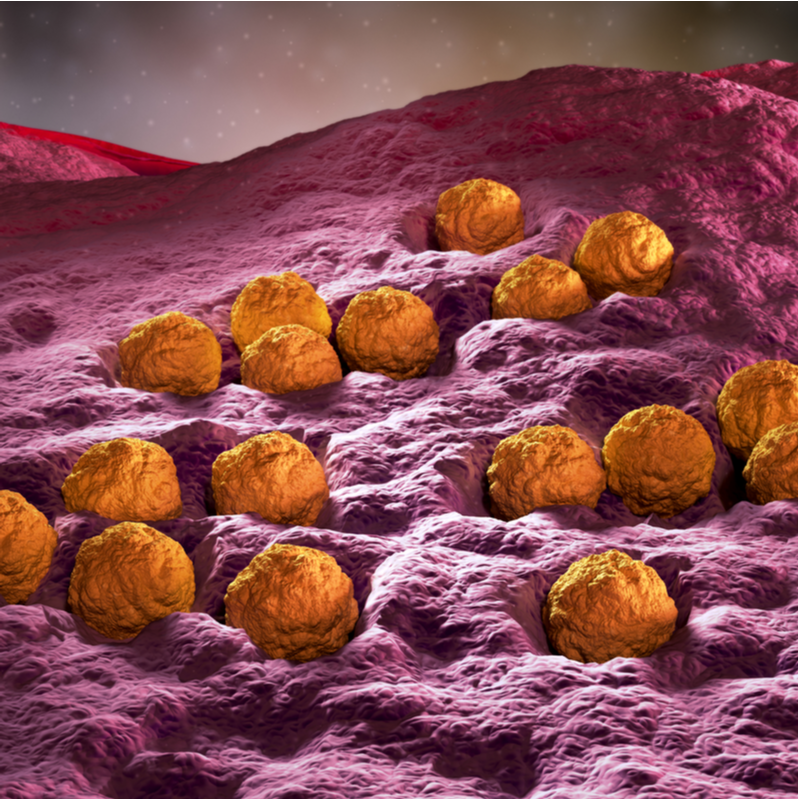
What is rubella?
Rubella is an infection with rubella viruses. These are mainly passed on from person to person via droplet infection. The primary characteristic of the disease is the skin rash. Infection with rubella is considered a childhood disease, but adults can also become infected with the virus. Many confuse rubella with ringworm. However, both are different diseases and are each caused by a different virus .
What is the incubation period for rubella?
The incubation period, i.e. the time between infection and the onset of the first symptoms, is about 14 to 21 days for an infection with rubella. Infected persons are infectious about one week before and one week after the rash appears.
What are the symptoms of rubella?
The initial symptoms of a rubella infection, are very reminiscent of those of an ordinary flu infection. For example, includes:
- Cough,
- Runny nose,
- Headache.
In
some cases, conjunctivitis occurs with itchy and
reddened eyes. In a large number of infections, these symptoms are the only ones that
occur. However, these are not called
rubella infections.
In about 50 % of patients, there are other symptoms in addition to the cold symptoms:
- Painful and swollen lymph nodes, especially in the neck area,
- Fever with a temperature of up to 38.5 degrees.
Absolutely
characteristic of rubella is the skin rash with bright red,
small and slightly raised spots. This itches only slightly at most.
The spots are demarcated and do not merge into one another, as is the case
with measles. In many cases, the rash is also only faintly visible
and first forms behind the ears. But within
a few hours it develops further over the face, neck,
arms and legs. Eventually it covers the whole body. After
three days at the latest, the rash disappears again.
The symptoms of rubella can vary from person to person and can therefore not be generalised . In addition, most of the symptoms are vague and can be associated with many other diseases.
What is the course of rubella in children?
As a rule, an infection with rubella in children runs its course quite harmlessly . Only every second child shows any symptoms at all. If symptoms develop, such as swelling of the lymph nodes, cold symptoms or the bright red rash, they usually go away after a week. An infection with rubella is also mild in older children or even adults. However, with age, the severity of the disease also increases. Possible complications that can occur in connection with rubella are as follows:
- Joint inflammation,
- Bronchitis,
- Inflammation of the brain,
- Inflammation of the middle ear,
- Heart muscle inflammation,
- Pericarditis.
How is rubella diagnosed?
If rubella is suspected , a doctor should be consulted. The doctor can find out relevant information about the patient's medical history. For example, the following can be asked:
- How long has the rash been present?
- Is the rash itchy?
- Is there fever or elevated body temperature?
- Is there any form of fatigue?
After
the anamnesis, the physical examination of the patient takes place.
Not only is the rash examined, but the
lymph nodes on the neck and throat are also palpated.
An infection with rubella cannot be diagnosed without a doubt on the basis of these examination measures . Therefore, certain antibodies against the virus are searched for in the patient's blood. The best time to do this is from the fifth day, after the symptoms such as rash or fever have started, .
How is rubella treated?
Currently there is no special therapy that can be used to fight the rubella viruses . Therefore, in the case of an infection with rubella, only symptomatic treatment is possible. For fever and pain, paracetamol or ibuprofen can be taken at , among other things. If necessary, calf compresses can help to lower the body temperature. All home remedies have their limits. If you suffer from symptoms for a long period of time and they do not get better or even get worse despite the measures mentioned above, you should consult a doctor . It is also essential to drink a sufficient amount of fluid, which should be supplied to the body. The best way is water or tea. Plenty of rest and physical rest also help the body to recover.
What is the prognosis for rubella?
As a rule, an infection with rubella heals by itself without complications within four to five days. In some cases, rubella can cause temporary swelling with stiffness and pain in the fingers and feet. In severe cases, heart muscle inflammation or inflammation of the brain can occur. If a pregnant woman is infected with the viruses before the 12th week of pregnancy, there is a more than 90 percent risk that the unborn child will suffer damage . After the 12th week of pregnancy, this risk is reduced by more than half.
How can rubella be prevented?
The best protection is and remains vaccination against the pathogen. The rubella vaccination not only protects the vaccinated person from infection, but also prevents the virus from spreading to the entire population. This is the only way to prevent local epidemics.
Is there an obligation to report rubella?
According to the Infection Protection Act, the suspicion, the disease itself or even the death from rubella, whether by direct or indirect detection, must be reported by name.
